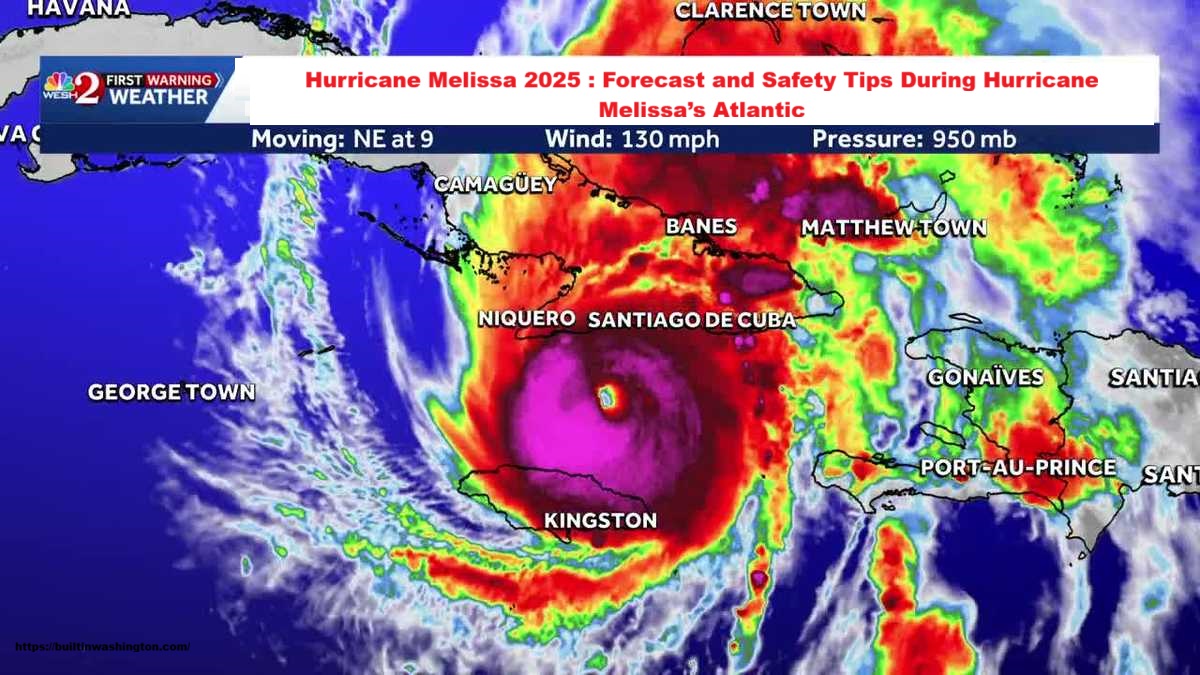A fierce storm is brewing in the Atlantic, and Hurricane Melissa is making headlines as one of the most powerful hurricanes in recent history. This storm has already caused catastrophic damage across the Caribbean, with Jamaica suffering a devastating Category 5 landfall. As it continues its journey, the threat of further destruction looms, making awareness and preparedness absolutely vital.
Current Forecast and Predicted Impact Areas
Hurricane Melissa has intensified into an extremely dangerous Category 5 storm, with winds reaching up to 185 mph, according to reports. It made landfall in Jamaica as one of the strongest hurricanes ever recorded in the Atlantic basin, causing severe destruction and loss of life. The storm is now moving northwest towards Cuba and the Bahamas, bringing with it extraordinary risks of flash floods and landslides. The forecast shows the storm maintaining its strength as it traverses the Caribbean, with impacts expected in Cuba, the Bahamas, and possibly reaching Bermuda. Heavy rainfall, storm surges, and destructive winds are predicted to continue affecting these areas. Residents and authorities in the path of Melissa need to stay alert and vigilant, monitoring updates from weather agencies and local officials. The storm’s slow movement increases the likelihood of prolonged damaging conditions and widespread flooding, making it one of the most threatening systems of the season.
How to Create an Effective Hurricane Safety Plan
Preparing for a hurricane involves more than just gathering supplies; it means having a clear, actionable safety plan. Start by securing your home:
-
Install storm shutters or board windows with plywood
-
Secure or bring inside outdoor furniture and loose items
-
Trim trees to minimize falling branches
Additionally, prepare an emergency kit containing:
-
At least a three-day supply of water and non-perishable food
-
Flashlights, batteries, first aid kit, and necessary medications
-
Important documents kept in waterproof containers
Make sure to:
-
Know your evacuation routes and have a plan for pets
-
Charge all mobile devices and have backup power sources
-
Communicate your plan with family members and practice it regularly
Finally, stay informed through updates from trusted weather sources such as the BBC and the National Hurricane Center. Timely information can save lives.
Preparing for a hurricane like Melissa involves more than just having supplies ready; it requires a well-thought-out plan. Start by securing your home reinforce windows, doors, and roofs, and secure outdoor items that could turn into projectiles. It’s crucial to know your evacuation routes ahead of time and have a designated shelter location. Keep a supply kit with essentials such as water, non-perishable food, medications, flashlights, and batteries. Communication is key, so ensure your mobile devices are charged and have backup power sources if possible. Make sure all family members understand the plan and practice it regularly, especially during hurricane season. Staying informed through reliable weather updates and local authorities helps you adapt quickly if the situation changes. Remember, the goal is to keep everyone safe and minimize damage to property while waiting for the storm to pass.
Complete Guide to Hurricane Melissa’s Atlantic Journey and Risks
Hurricane Melissa started as a tropical storm, rapidly intensifying due to extremely warm Atlantic Ocean waters around 30°C (86°F). Its path has taken it from the Caribbean, where it lashed Jamaica as a formidable Category 5 hurricane, through Cuba, and now heading toward the Bahamas. This storm’s remarkable strength is partly due to climate change, which has caused ocean temperatures to rise, fueling stronger storms. The storm’s slow pace over Jamaica contributed to severe flooding, landslides, and widespread devastation. The forecast indicates it will continue to traverse the Caribbean, weakening slightly but still remaining dangerous. The primary risks include extreme wind damage, coastal flooding from storm surges, and inland flooding from heavy rains. Coastal communities are on high alert, with authorities warning of life-threatening conditions. With its current trajectory, Melissa poses risks not only to the Caribbean islands but also potential hazards for the Atlantic coast, especially if it veers northward.
Hurricane Melissa’s Devastation: Effects on Jamaica and Beyond
Jamaica experienced catastrophic impacts as Hurricane Melissa made its historic landfall. Winds of up to 185 mph caused extensive damage to homes, infrastructure, and the environment. Many residents refused to evacuate despite warnings, leading to tragic consequences and a prolonged recovery process. The storm brought about widespread flooding, landslides, and power outages that may take weeks or months to resolve. Jamaica’s mountainous terrain intensified rainfall and flooding, further complicating rescue and relief efforts. Alongside Jamaica, other Caribbean nations including Cuba, the Bahamas, and Turks and Caicos faced severe storm surges, flooding, and wind damage. The storm’s sheer strength and slow movement made disaster management challenging. Recovery will depend on ongoing humanitarian aid, government response, and community resilience. Lessons learned from this storm emphasize the need for early preparation, evacuation plans, and robust infrastructure to withstand such extreme weather events.
Post-Storm Actions and Recovery Tips
Once Hurricane Melissa passes, safety remains the priority. Follow these steps:
-
Avoid flooded or unsafe areas to prevent injury
-
Document damage thoroughly for insurance and aid purposes
-
Wear protective gear during cleanup, avoiding downed power lines
-
Restock emergency supplies and check on neighbors, especially vulnerable individuals
Local authorities will issue guidance on when it is safe to return or leave shelters. Community cooperation speeds up recovery and helps rebuild stronger. Restoring utilities and communication lines is critical to normalcy.
Once Hurricane Melissa passes, recovery begins. First, stay cautious and avoid flooded or damaged areas, as they may be unsafe. Listen to local authorities for updates on road conditions and relief efforts. Document the damage to your property for insurance claims and help authorities assess the overall impact. Cleanup should be done carefully wear protective gear, and avoid downed power lines or unstable structures. Check your emergency supplies and replenish anything used during the storm. Reach out to community organizations for assistance if needed, and support neighbors who may be more vulnerable. Restoring communication lines and utilities is vital for safety and recovery. Remember, healing takes time, and community cooperation is crucial. Staying patient, prepared, and informed helps everyone move forward after this storm’s destructive wake.
Conclusion: Staying Informed and Ready for Hurricanes
Hurricanes like Melissa serve as a stark reminder of nature’s power and unpredictability. Staying informed by following trusted sources such as the National Hurricane Center and local weather stations can save lives. Preparing early and having a clear plan in place makes a difference. Even if the storm seems far away, conditions can change rapidly never underestimate the danger. As climate change continues to fuel stronger storms, the importance of preparedness grows. Community efforts and individual actions to stay informed, ready, and resilient are essential. While the aftermath of Hurricane Melissa highlights the storm’s destructive potential, it also underscores hope through preparation and unity, communities can weather even the fiercest hurricanes and rebuild stronger than before.
This comprehensive coverage provides a clear understanding of Hurricane Melissa’s current status, risks, preparation strategies, and recovery tips, helping residents and authorities stay safe amid one of the season’s most formidable storms.
for more Best Places in Seattle to Buy Fresh Flowers and Affordable Co-Working Spaces in Washington’s













